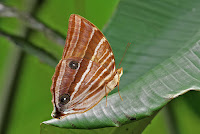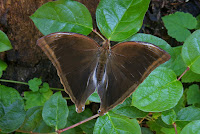<> Amathusia phidippus (Linnaeus,1763) <>
the Common Palmking ผีเสื้อหนอนมะพร้าวขนปุย
Click on any photo to see all photos full size in Lightbox
Additions and corrections to the information provided on this page is always welcome. Please use the Contact form.
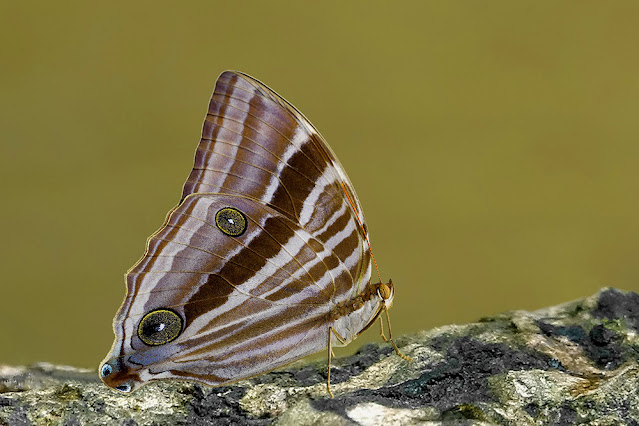
Photo taken at Sabang, Palawan, Philippines. 50m a.s.l.

Quite widely distributed across the region except in the colder countries of the north. It can be locally common. It is a large species and the sexes are similar in appearance with just a few minor differences. It is shade-loving and timid flying very late in the afternoon and roosting during the rest of the day with its wings tightly closed. The cryptic colouration of the underside of its wings is excellent camouflage and enables it to hide on the trunks of trees while it rests. It has a strong and erratic flight but does not usually fly very far.
Amathusia phidippus is multivoltine with several broods per annum. The adult female lays her eggs in a row on the underside of a leaf on the host plant. The larvae are gregarious, meaning that they feed together in groups. They are voracious feeders, usually staying on the underside of the leaf.
Synonyms and previously used names: Papilio phidippus, Amathusia patalena, Amathusia gunneryi
Taxonomy: Animalia - Arthropoda - Insecta - Lepidoptera - Nymphalidae - Morphinae - Amathusia - phidippus
Regional subspecies: A.phidippus cebuensis (Philippines), A.phidippus celebensis (Sulawesi-Indonesia), A.phidippus negrosensis (Philippines), A.phidippus phidippus (S.Myanmar, Thailand, Laos, Cambodia, Vietnam, Malaysia, Singapore, Indonesia, Philippines), A.phidippus pollicaris (Philippines), A.phidippus palawana (Philippines). There are a number of other subspecies reported amongst the islands of Indonesia but it is not known how many of these are valid.
Regional Distribution: Myanmar, Thailand, Laos, Cambodia, Vietnam, Malaysia, Singapore, Indonesia, Philippines
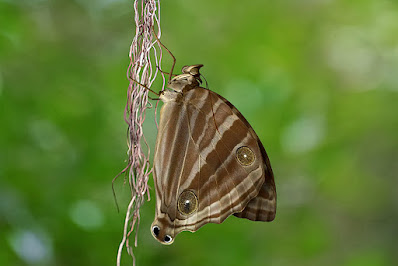 |
| Than Bok Khorani National Park, Krabi, Thailand 60m a.s.l. |
Habitat: Amathusia phidippus is most often seen near agricultural land, particularly coconut plantations at quite low elevations. It has been recorded in locations up to 300m a.s.l.
Flight time: all year, depending on location Wingspan: 90-100mm
Life History: egg 6-7 days instar 1 4 days instar 2 4 days instar 3 4 days instar 4 6-7 days instar 5 10-11 days pupa 10-12 days Total egg to adult 44-47 days
All times are approximate and can vary depending on the season and on the host used.
Larval Hosts: Areca catechu, Borassus flabellifer, Calamus thwaitesii, Cocos nucifera, Corypha utan, Cyrtostachys renda, Elaeis guineensis, Metroxylon sagu, Nypa fruticans (Arecaceae), Musa x paradisiaca (Musaceae), Etlingera elatior (Zingiberaceae).
Actual host plant used depends upon location and availabilty of plant species.
Adult Food Sources: Nectar - not known to feed on nectar. Other - over-ripe fruit, decomposing organic matter
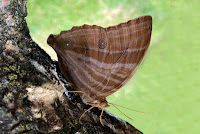 |
| Than Bok Khorani National Park, Krabi, Thailand |
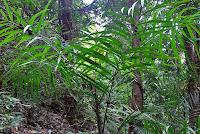 |
| Calamus thwaitesii, a larval host |
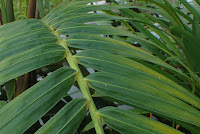 |
| Nypa fruticans, another larval host |
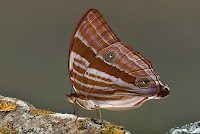 |
| Than Bok Khorani National Park, Krabi, Thailand |
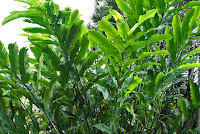 |
| Etlingera elatior, a larval host |
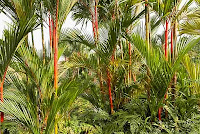 |
| Cyrtostachys renda, another larval host |
Links to other pages in this series for species in the same subfamily

